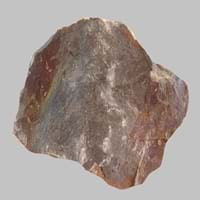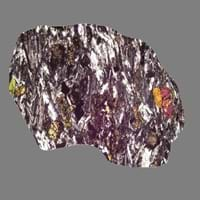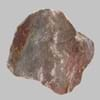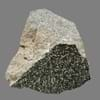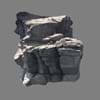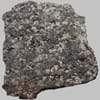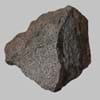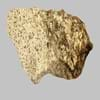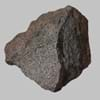Definition
Hawaiite is volcanic rock that resembles basalt. It is an olivine basalt with intermediate composition between alkali olivine and mugearite
Trachyte is a grey fine-grained volcanic rock which mainly consists of alkali feldspar
Origin
Hawaii Islands
Unknown
Discoverer
Joseph Iddings
Alexandre Brongniart and René Just Haüy
Etymology
From Hawaii Islands
From Greek trakhus rough’ or trakhutēs roughness
Class
Igneous Rocks
Igneous Rocks
Sub-Class
Durable Rock, Medium Hardness Rock
Durable Rock, Medium Hardness Rock
Other Categories
Opaque Rock
Fine Grained Rock, Opaque Rock
Texture
Glassy, Massive, Porphyritic, Scoriaceous, Vesicular
Aphanitic to Porphyritic
Color
Black, Brown, Light to Dark Grey
Black, Brown, Dark Greenish - Grey, Green, Grey, Light to Dark Grey, White
Durability
Durable
Durable
Scratch Resistant
Yes
Yes
Appearance
Dull and Soft
Banded
Interior Uses
Decorative Aggregates, Floor Tiles, Flooring, Homes, Hotels, Interior Decoration, Kitchens
Decorative Aggregates, Flooring, Homes, Interior Decoration
Exterior Uses
As Building Stone, As Facing Stone, Paving Stone, Garden Decoration, Office Buildings
As Building Stone, As Facing Stone, Paving Stone, Garden Decoration, Office Buildings
Other Architectural Uses
Curbing
Curbing
Construction Industry
As Dimension Stone, Cobblestones, Rail Track Ballast, Roadstone
As Dimension Stone, Building houses or walls, Cement Manufacture, Construction Aggregate, for Road Aggregate, Landscaping, Making natural cement, Manufacture of Magnesium and Dolomite Refractories
Medical Industry
Not Yet Used
Not Yet Used
Antiquity Uses
Artifacts
Artifacts, Monuments, Sculpture, Small Figurines
Commercial Uses
Creating Artwork, Sea Defence
Cemetery Markers, Creating Artwork
Types
Not Available
Not Available
Features
Has High structural resistance against erosion and climate, Very fine grained rock
Available in Lots of Colors and Patterns, Is one of the oldest rock, Matrix variable
Archaeological Significance
Famous Monuments
Easter Island in the Polynesian Triangle, Pacific Ocean
Data Not Available
Sculpture
Not Yet Used
Used
Famous Sculptures
Not Applicable
Data Not Available
Figurines
Not Yet Used
Used
Formation
Hawaiite is a fine-grained, hard rock that forms when bits of lava shoot out of volcanoes and reach the Earth's surface.
Trachyte is an igneous volcanic rock with an aphanitic to porphyritic texture. It is the volcanic equivalent of syenite rock and forms as a result of magmatic differentiation.
Mineral Content
Olivine, Plagioclase, Pyroxene
Augite, Biotite, Feldspar, Hornblade, Plagioclase, Quartz
Compound Content
Aluminium Oxide, CaO, Iron(III) Oxide, FeO, Potassium Oxide, MgO, MnO, Sodium Oxide, Phosphorus Pentoxide, Silicon Dioxide, Titanium Dioxide
Potassium Oxide, Sodium Oxide, Silicon Dioxide
Types of Metamorphism
Impact Metamorphism
Cataclastic Metamorphism, Contact Metamorphism, Regional Metamorphism
Types of Weathering
Biological Weathering
Biological Weathering, Chemical Weathering, Mechanical Weathering
Types of Erosion
Not Applicable
Chemical Erosion, Coastal Erosion, Glacier Erosion, Sea Erosion, Water Erosion, Wind Erosion
Grain Size
Not Applicable
Fine Grained
Fracture
Conchoidal
Not Available
Streak
Not Available
White
Porosity
Less Porous
Less Porous
Luster
Not Available
Metallic
Cleavage
Not Applicable
Not Available
Toughness
Not Available
Not Available
Specific Gravity
Not Available
2.7
Transparency
Opaque
Opaque
Density
Not Available
2.43-2.45 g/cm3
Resistance
Heat Resistant, Pressure Resistant, Wear Resistant
Heat Resistant, Impact Resistant, Wear Resistant
Deposits in Eastern Continents
Asia
India, Russia
China, India, Iran, Saudi Arabia, Sri Lanka, Taiwan, Thailand, Turkey, Vietnam
Africa
South Africa
Angola, Egypt, Madagascar, Namibia, Nigeria, South Africa
Europe
Iceland
Bulgaria, England, Germany, Norway, Romania, Switzerland
Others
Hawaii Islands
Not Yet Found
Deposits in Western Continents
North America
Canada, USA
USA
South America
Brazil
Brazil, Chile
Deposits in Oceania Continent
Australia
Not Yet Found
New Zealand, Queensland, South Australia, Western Australia
All about Hawaiite and Trachyte Properties
Know all about Hawaiite and Trachyte properties here. All properties of rocks are important as they define the type of rock and its application. Hawaiite and Trachyte belong to Igneous Rocks.Texture of Hawaiite is Glassy, Massive, Porphyritic, Scoriaceous, Vesicular whereas that of Trachyte is Aphanitic to Porphyritic. Hawaiite appears Dull and Soft and Trachyte appears Banded. The luster of Hawaiite is not available while that of Trachyte is metallic. Hawaiite is available in black, brown, light to dark grey colors whereas Trachyte is available in black, brown, dark greenish - grey, green, grey, light to dark grey, white colors. The commercial uses of Hawaiite are creating artwork, sea defence and that of Trachyte are cemetery markers, creating artwork.
